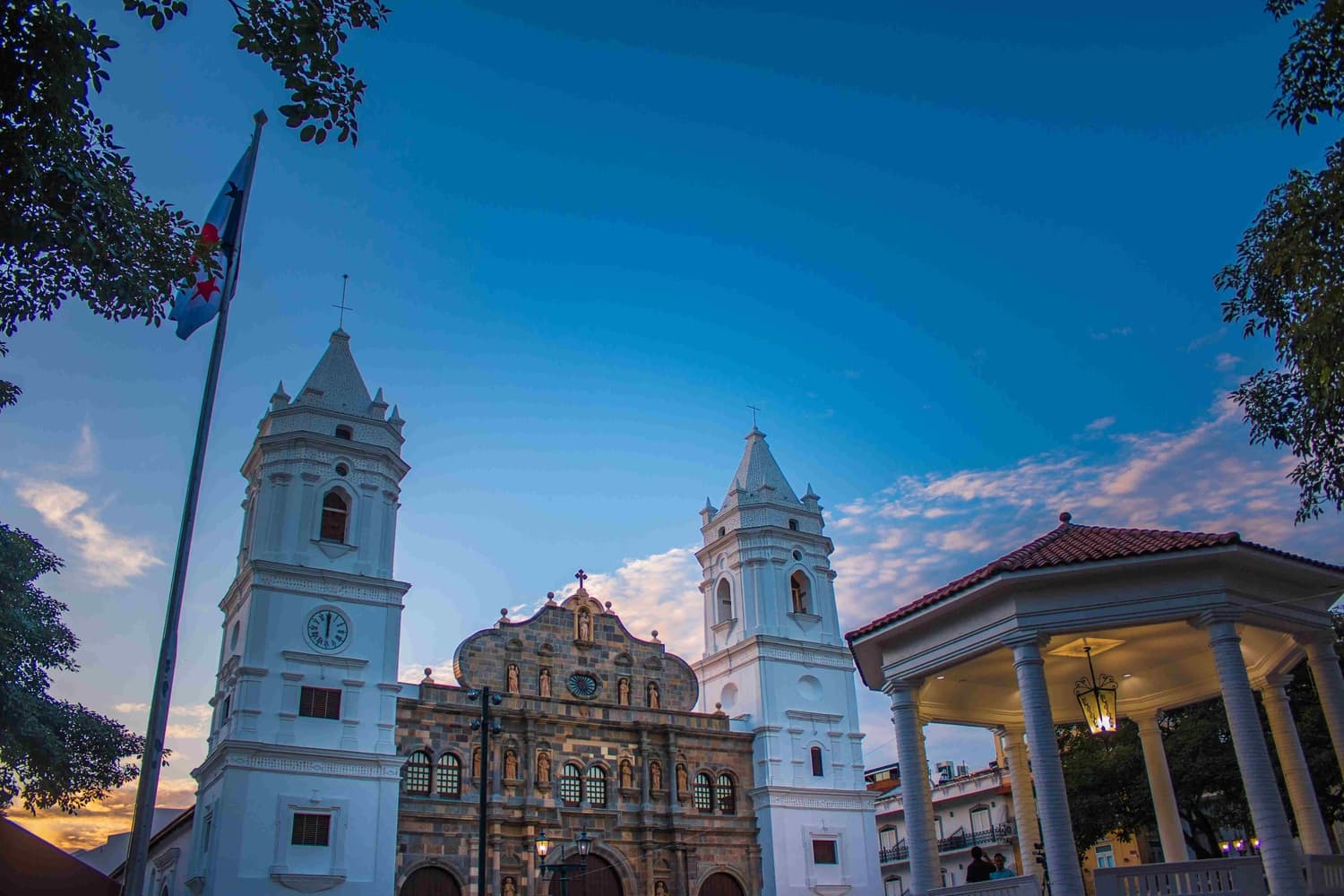
El Casco Antiguo es Patrimonio de la Humanidad y posee una riqueza inigualable, que conserva en sus avenidas parte de la historia que conforma la medula espinal de la cultura de nuestro país. En Panamá, como en muchos países de Latinoamérica, se practica la costumbre de visitar siete iglesias durante Semana Santa que empieza en la vigilia del Jueves Santo luego de la misa vespertina de la cena del señor. El numero de monumentos religiosos que posee es amplio y cada uno tiene una historia que enriquece este sector que es uno de los favoritos entre los turistas.
Catedral Basílica Santa María La Antigua
También conocida como Catedral Metropolitana; fue la primera edificación construida para la fe católica en el istmo que conecta el norte con el sur de América.
Su ubicación inicial era Santa María La Antigua del Darién, pero en 1520 fue mudada a Panamá Viejo. A los 24 años de funcionamiento en ese territorio se quema en 1644 y su reconstrucción finalizó en 1652. El fuego la volvió a alcanzar durante el saqueo de los piratas a la ciudad en 1671, pero renace cuando en 1674 fue una de las primeras edificaciones en funcionar tras la reconstrucción de la ciudad.
La edificación aún conserva objetos de la Iglesia Santa María La Antigua de Darién y sus torres llegaron a ser las más altas de Latinoamérica.
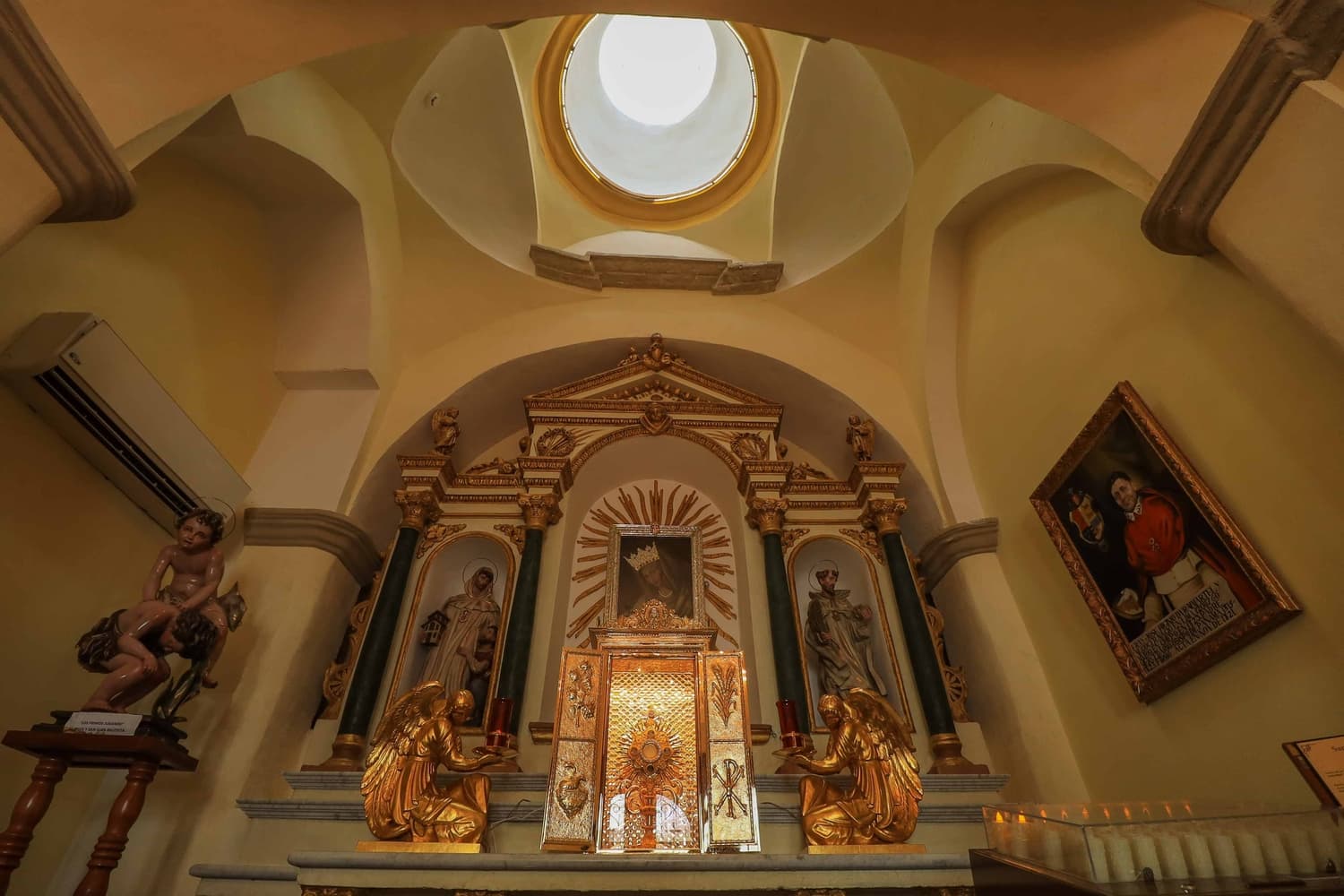
Iglesia Nuestra Señora de La Merced
Fue la única iglesia de Panamá la Vieja que no se quemó durante el saqueo de los piratas en 1671. Esto producto de que era el cuartel del pirata Herny Morgan y este lo protegió de las llamas. Con la construcción del Casco Antiguo en 1680, fue llevada piedra por piedra hasta su nueva ubicación. Aún mantiene su fachada inicial, sus columnas de madera y su techo original colonial.
Tiene dos capillas: una dedicada a la Virgen de la Capilla, antes de quincha; y la otra que funciona como Mausoleo. Sus cuatro campanas llevan los nombres: San Serapio, Nuestra Señora de la Merced, San Pedro Nolasco y San Ramón Nonato.
Adentro hay un museo con documentos y objetos religiosos y tiene un cuadro que data de la época del Panamá Viejo
Iglesia de San José
Nació en Panamá Viejo en el año 1612 y quemada durante el ataque de los piratas en 1671. Luego se construyó entre 1671 y 1675 como una Iglesia Colonial en la nueva ciudad. Es reconocida incluso mundialmente por su altar barroco labrado en caoba y recubierto de oro en 1915.
Un Fray cubrió el altar con albayalde que es un oxido de plata que tiñe de negro el oro y el pirata Morgan llegó al lugar y no lo saqueó, más bien le dio una limosna al Fray.
Iglesia de San Francisco de Asís
La estructura fue construida en el siglo XVII y casi destruida por los incendios de 1737 y 1756. Fue renovada casi en su totalidad en 1918, desde ese momento cuenta con la estructura actual. A pesar de las remodelaciones con materiales actuales, mantiene los cimientos originales, algunos elementos y paredes.
Estas instalaciones también sirvieron de cuartel general, hospital del Congreso Anfictiónico, colegio agustino y el Instituto Bolívar. Por si fuera poco, fue aquí donde se reunió la primera Asamblea Constituyente. En la sala capitular del convento, se celebró el Congreso Anfictiónico convocado por Simón Bolívar para aprobar los protocolos del istmo dentro de la Gran Colombia.
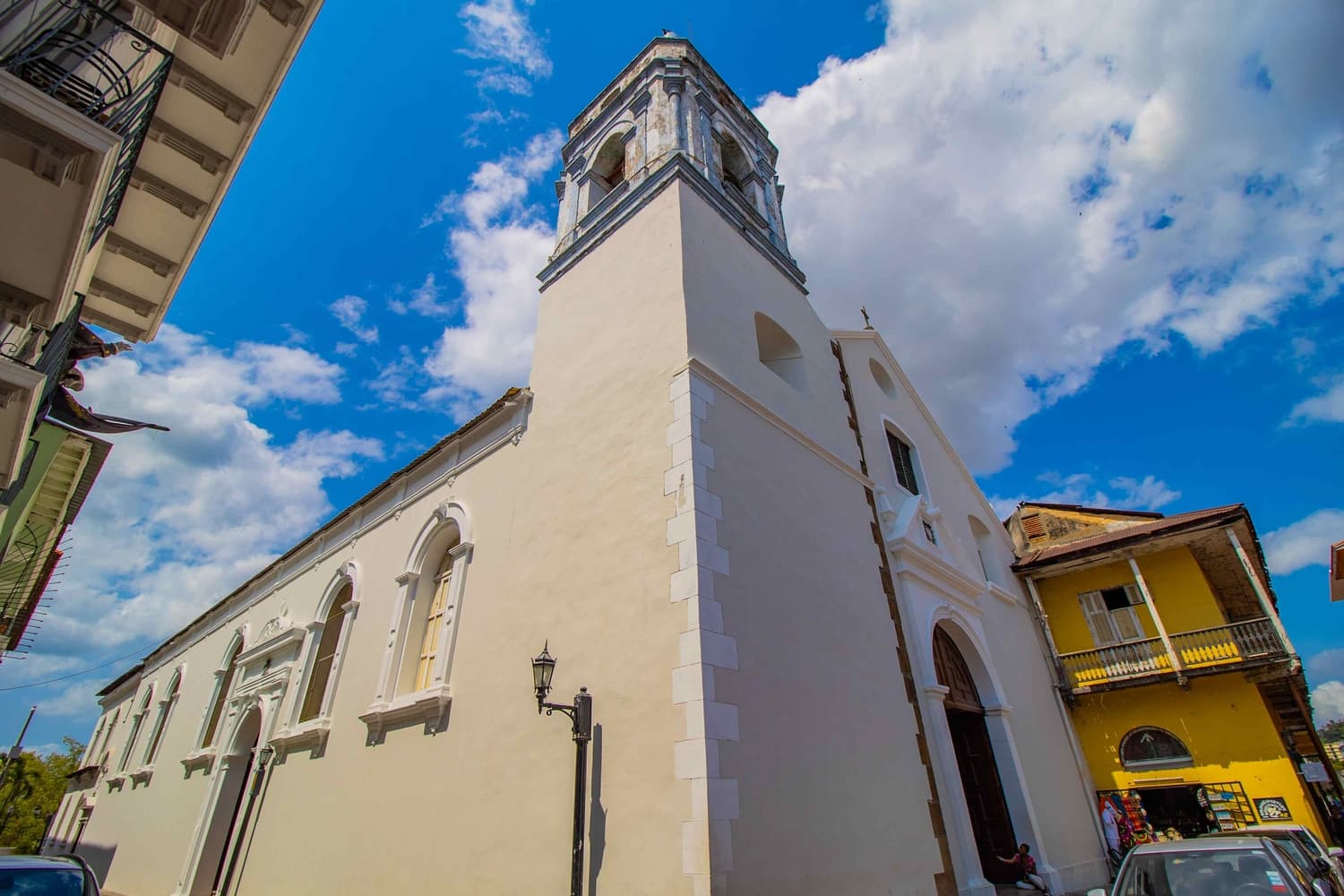
Iglesia de San Felipe Neri
Su construcción data de 1688, mucho después de la reubicación de la ciudad a su nueva ubicación y luego de la toma, incendio y saqueo de Panamá la Vieja por el pirata Henry Morgan en 1671.
Su entrada principal está tapada por colegio y para entrar hay que acceder por una puerta lateral de vidrio.
Iglesia Santa Ana
La iglesia Santa Ana es la única que, perteneciendo al Casco Antiguo, no está dentro de sus muros, sino que su entrada está por fuera. La construyó el Conde de Santa Ana con fondos propios y fue finalmente consagrada en 1764.
Sufrió un incendio en 1854 y posteriormente reconstruida. Otras remodelaciones se realizaron en el siglo XX que le dio la apariencia actual y que incluyeron elementos para disfrutar también de la modernidad.
Capilla Juan Pablo II
También conocida como Capilla de la Presidencia, se consagró el 1ero de noviembre de 2014. A pesar de tener capacidad para 192 personas, es únicamente para el uso presidencial. Aunque su acceso es restringido, los días jueves y viernes santos, de acuerdo a la disposición de las autoridades, se puede visitar en el marco del tradicional recorrido de las siete iglesias.

The Seven Historical Churches in Casco Antiguo that Enrich Panama’s Culture
Casco Antiguo is a World Heritage Site and has an unparalleled wealth, which preserves in its avenues part of the history that makes up the cultural backbone of our country. In Panama, as in many Latin American countries, visiting seven churches during Holy Week is part of the culture, beginning on the eve of Holy Thursday after the evening mass of the Lord’s Supper. The number of religious monuments that Casco Antiguo and their history makes this sector in Panama City one of the favorites among tourists.
Cathedral Basilica Santa Maria La Antigua
Also known as Metropolitan Cathedral; It was the first building built for the Catholic faith on the isthmus that connects North and South America.
Its initial location was Santa Maria La Antigua del Darien, but in 1520 it was moved to Panama Viejo. After 24 years of operation in that territory, it burned in 1644 and its reconstruction was completed in 1652. The fire reached it again during the pirates’ looting of the city in 1671, but it was rebuilt when in 1674 it was one of the first buildings in function after the reconstruction of the city.
The building still preserves objects from the Santa Maria La Antigua de Darien Church and its towers were used to be the tallest building in Latin America.
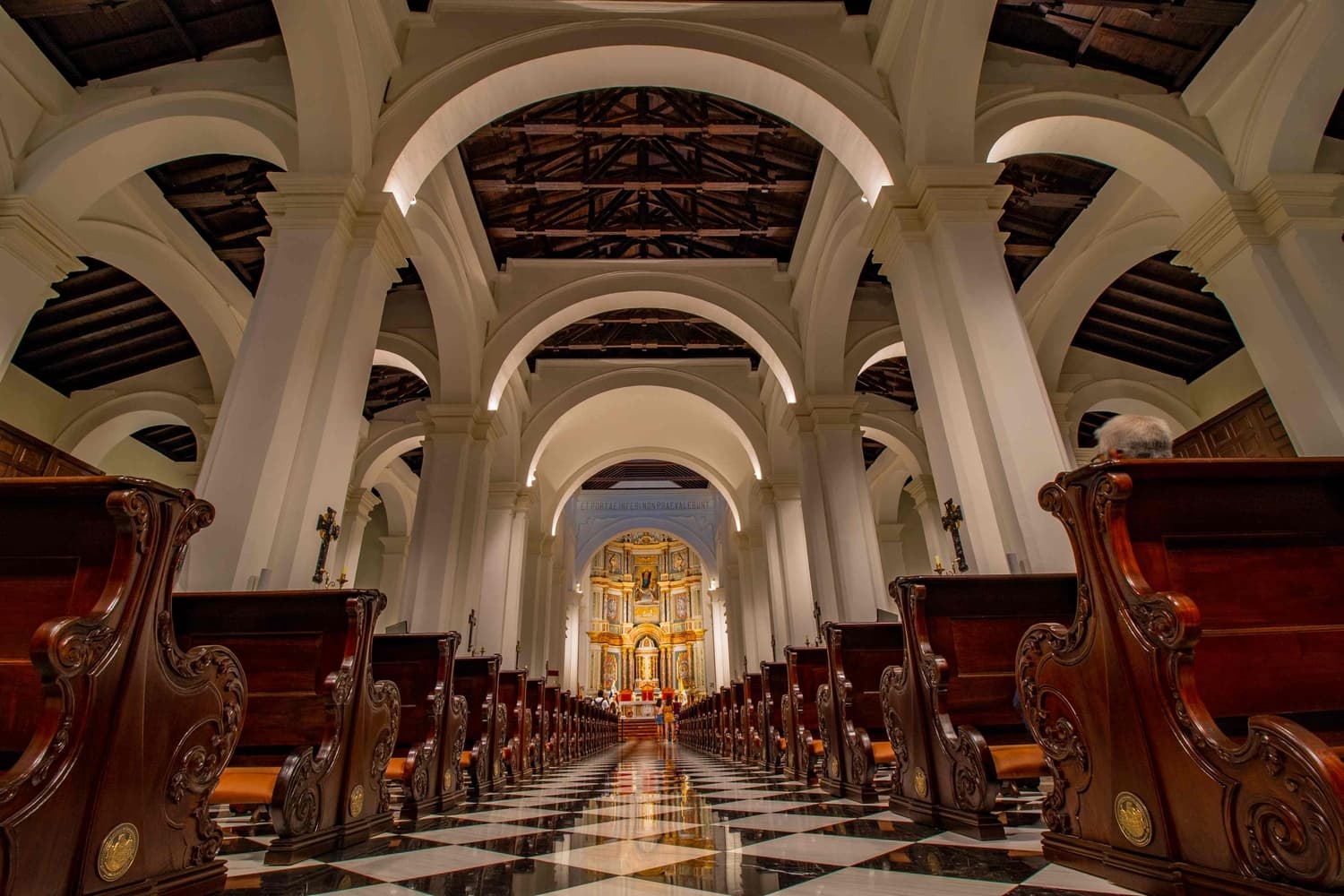
Nuestra Señora de La Merced Church
It was the only church in Old Panama that did not burn down during the looting by pirates in 1671. This was due to the fact that it was the headquarters of the pirate Herny Morgan who protected it from the flames. With the construction of the Old Town in 1680, it was carried stone by stone to its new location. It still maintains its original façade, its wooden columns and its original colonial roof.
It has two chapels: one dedicated to Virgen de la Capilla, before the “quincha”; and the other that works as a Mausoleum. Its four bells bear the names: San Serapio, Nuestra Señora de la Merced, San Pedro Nolasco and San Ramon Nonato. Inside there is a museum with documents and religious objects and it has a painting that dates back to the time of Old Panama.
San Jose Church
It was built in Panama Viejo in 1612 and burned during the pirate attack in 1671. It was later built between 1671 and 1675 as a Colonial Church in the new city. It is even recognized worldwide for its baroque altar carved in mahogany and covered in gold in 1915.
A Fray covered the altar with white lead, which is a silver oxide that stains gold black, and the pirate Morgan arrived at the place and did not loot it, rather he gave the Fray an alms.
San Francisco de Asis Church
The structure was built in the 17th century and almost destroyed by the fires of 1737 and 1756. It was almost completely renovated in 1918, since then it has the current structure. Despite the renovations with current materials, it maintains the original foundations, some elements and walls.
These facilities also served as the headquarters, hospital of the Amphictyonic Congress, Augustinian school and the Bolivar Institute. As if that were not enough, it was here that the first Constituent Assembly met. In the chapter house of the convent, the Amphictyonic Congress called by Simon Bolivar was held to approve the protocols of the isthmus within la Gran Colombia.
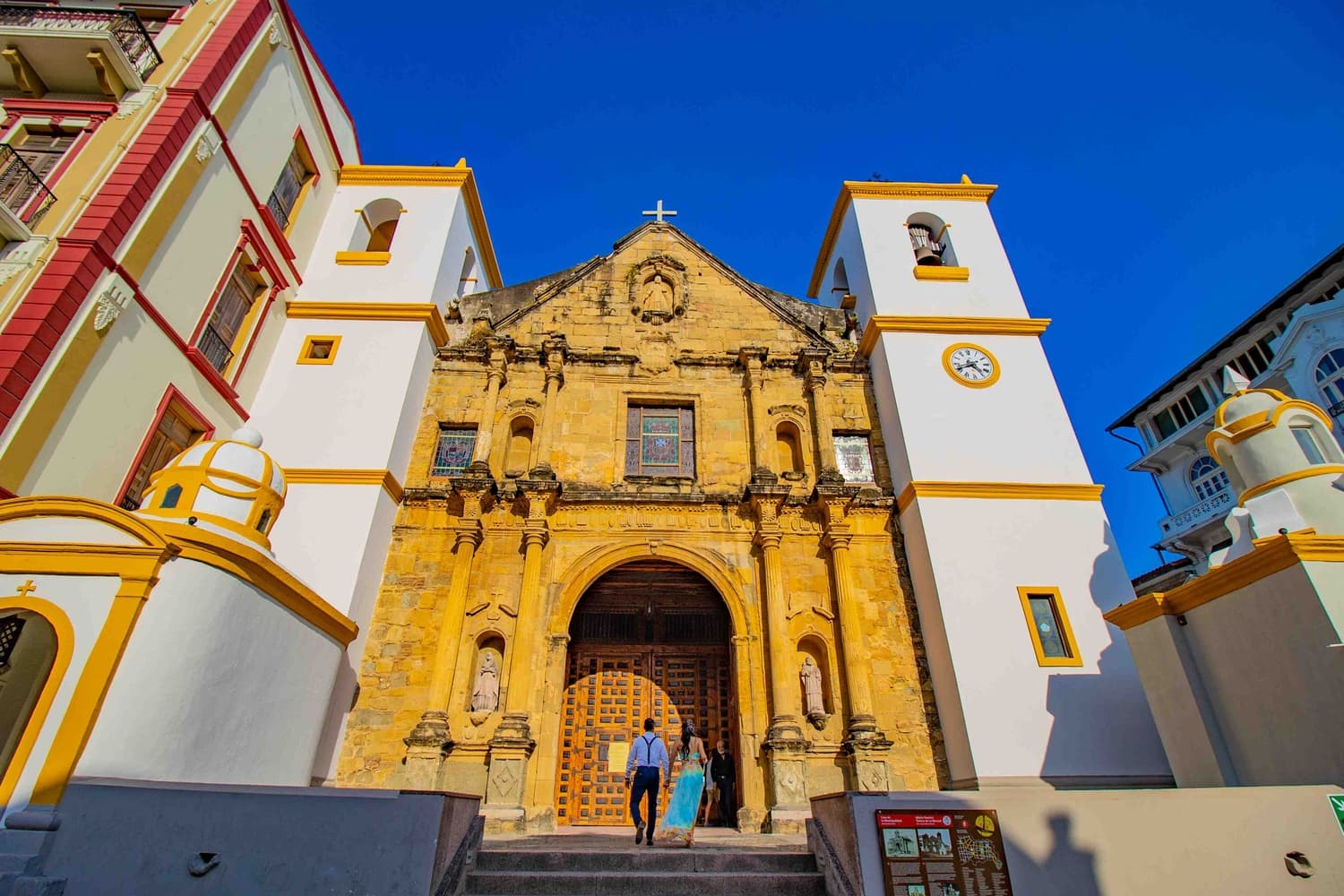
San Felipe Neri Church
Its construction dates back to 1688, long after the relocation of the city to its new site and after the taking, burning and looting of Old Panama by the pirate Henry Morgan in 1671. Its main entrance is covered by a school and to enter you have to go through a side glass door.
Santa Ana Church
The Santa Ana church is the only one belonging to Casco Antiguo, is was not inside its walls, its entrance is outside. It was built by the Count of Santa Ana with his own funds and was finally consecrated in 1764.
It burned by fire in 1854 and was later rebuilt. Other renovations were carried out in the 20th century, which gave it its current appearance and included elements of modernity.
Juan Pablo II Chapel
Also known as the Chapel of the Presidency, it was consecrated on November 1, 2014. Despite having capacity for 192 people, it is only for presidential use. Although its access is restricted, on Holy Thursdays and Fridays, according to the disposition of the authorities, it can be visited as part of the traditional tour of the seven churches.


